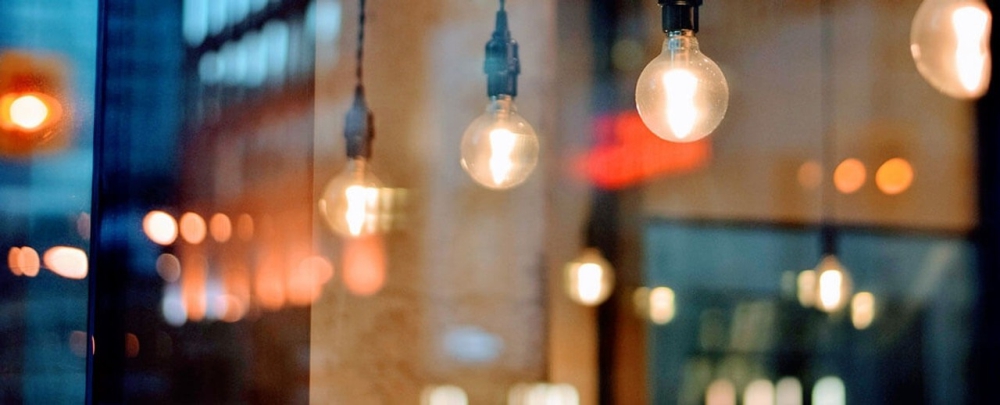Not to be confused with GLS or golfball light bulbs, a globe light bulb is a large, round light bulb usually used in decorative fittings and in hospitality industries like bars and restaurants.
Their size means that they are inappropriate for smaller lamps and fittings, but can be striking when paired with larger ceiling lights.
Globe light bulbs can sometimes be around twice as wide as a standard GLS light bulb so as a result, their cap types are limited. The majority will be fitted with either a B22d bayonet cap (sometimes abbreviated to BC) or an E27 Edison screw (ES) base. The B22d cap is the ‘push and twist’ type of fitting that is used on the majority of lamps in the UK, while the E27 is the screw-in type that is more common in Europe and the US.
View our article here to read more about cap types.
The different sizes of globe light bulbs
The distinctive shape of globe light bulbs makes them relatively easy to recognise. The large, round light bulb tapers very suddenly into a comparatively narrow base.
While they look similar to GLS or golfball light bulbs, the size of the globe compared to its cap makes it easy to differentiate.
They come in several standard sizes as follows (the measurement refers to the diameter of the light bulb at its widest point):
G80 – 80mm diameter
G95 – 95mm diameter
G125 – 125mm diameter
G200 – 200mm diameter
Energy-saving globe light bulbs
Traditional incandescent globe light bulbs will be in use until September 2018, when an EU directive takes effect banning their sale. They will be replaced by energy-saving LED alternatives.
LED globe light bulbs have been designed to look like the incandescent light bulbs they supersede. They have the classic globe shape and as the technology develops, they are beginning to look more like traditional light bulbs.
These will often be opaque (sometimes described as ‘pearl’ or ‘opal’) and they are made out of glass or a heat-resistant thermal plastic. Many have a white plastic base to hide the light bulb’s componentry, but there are now models available that are completely transparent. Look out for the distinctive yellow ‘filaments’ of these LED light bulbs, designed to mimic the filaments of the traditional incandescent globes.

LEDs, or light-emitting diodes, are revolutionizing the way we light our spaces. They are up to 90% ...
Learn more >Spotlight beam angle is a crucial yet often overlooked characteristic. It defines how widely light s...
Learn more >When considering how much lighting is needed for a bathroom, the best designs incorporate a mix of g...
Learn more >